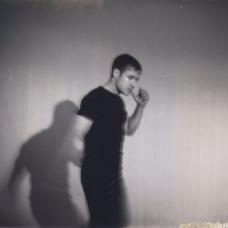Jordan Crandall is a media artist, writer, and performer. His work combines media art, speculative fiction, performance art, and media theory. The topics it concerns include artificial intelligence, autonomous systems, and human-machine composites; urban infrastructure, automotive and aerial robotics; computational structures and urban ecologies; computable matter and intelligent environments, centered around aesthetic and ontological aspects, their impacts on society and culture, and their implications for artistic practice. He is the 2011 winner of the Vilém Flusser Theory Award for outstanding theory and research-based digital arts practice, given by the Transmediale in Berlin in collaboration with the Vilém Flusser Archive of the University of Arts, Berlin. His project Unmanned – performed at Transmediale in Berlin, Eyebeam New York, and the V2_ Institute in Rotterdam explores new ontologies of distributed systems, and the status of the human in a militarized landscape increasingly dependent on automated technology.
His current work involves narrative fiction that is technoscientifically-engaged, functions in an analytical and speculative capacity, and pursues innovative combinations of genre and form — argumentation and allegory, social criticism and satire, philosophical dialogue and adventure-fantasy. It synthesizes philosophy, theory, and criticism in self-reflexive and performative ways. His work in progress Autodrive offers a portrait of a speculative future, a society in the throes of change. It is a work of performative fiction, an odyssey along the highways at a time when artificial intelligence is transforming the landscape of mobility, retooling the forms and imaginaries of transit. The culture of the automobile is compelled to make way for a society of autonomous machines.
Crandall’s video installations, presented in numerous exhibitions worldwide, combine formats and genres deriving from cinematic and military culture, exploring new regimes of power and their effects on subjectivity, sociality, embodiment, and desire. An anthology of his projects and critical writing, Drive: Technology, Mobility, and Desire, was published by Hatje Cantz Verlag in 2002. (Cover pdf: http://jordancrandall.net/main/+books/_assets/crandall_cover.pdf) with an introductory essay by Peter Weibel. His art and research project Under Fire, concerning the organization and representation of violence, has resulted in two catalogues published by the Witte de With center for contemporary art, Rotterdam, and an online archive developed for the International Biennial of Contemporary Art in Seville.
Solo exhibitions include the Museum of Contemporary Art Kiasma in Helsinki; the Neue Galerie am Landesmuseum Joanneum in Graz; ARTLAB in Tokyo; the Museo de Arte Carillo Gil in Mexico City; the Centre d’Art Contemporain de Basse-Normandie in Caen; the Kunst-Werke in Berlin; the Kitchen in New York; AGORA in Rio de Janeiro; the Edith Russ Site für Medienkunst in Oldenburg; and the TENT Centrum Beeldende Kunst in Rotterdam. He was included in Documenta X in Kassel in 1997 and his work has also been presented in group exhibitions at institutions such as the Whitney Museum in New York, the Tate Modern, and the San Francisco Museum of Modern Art.
